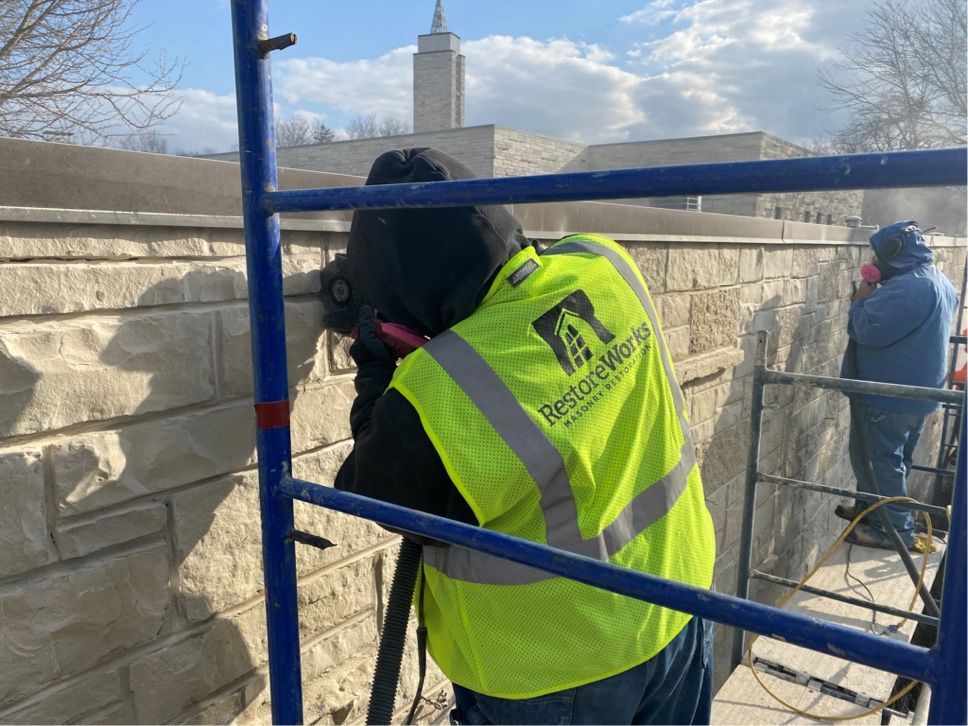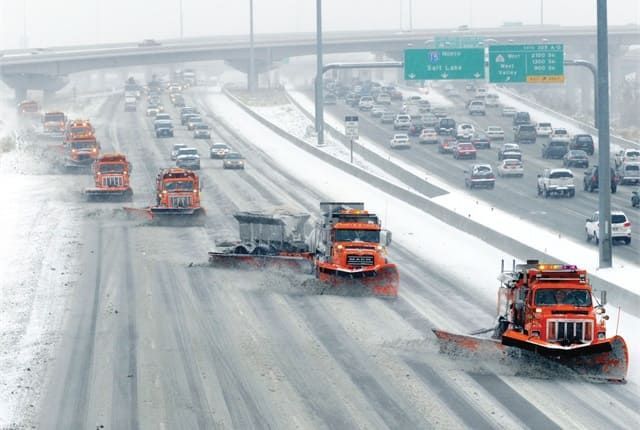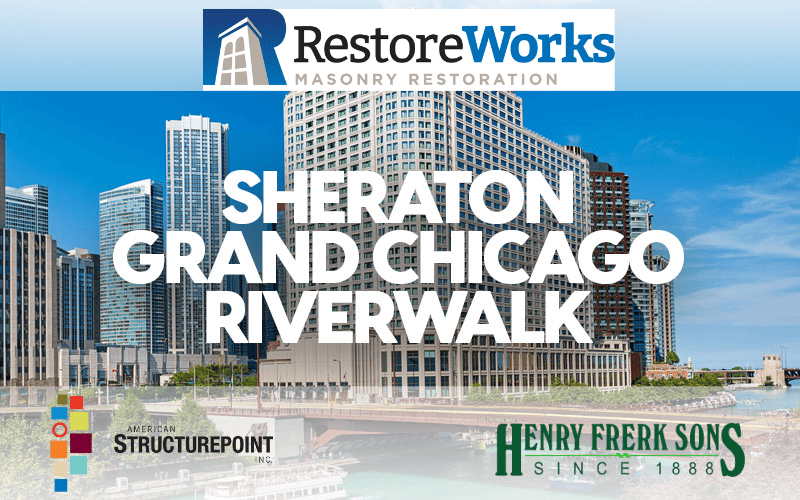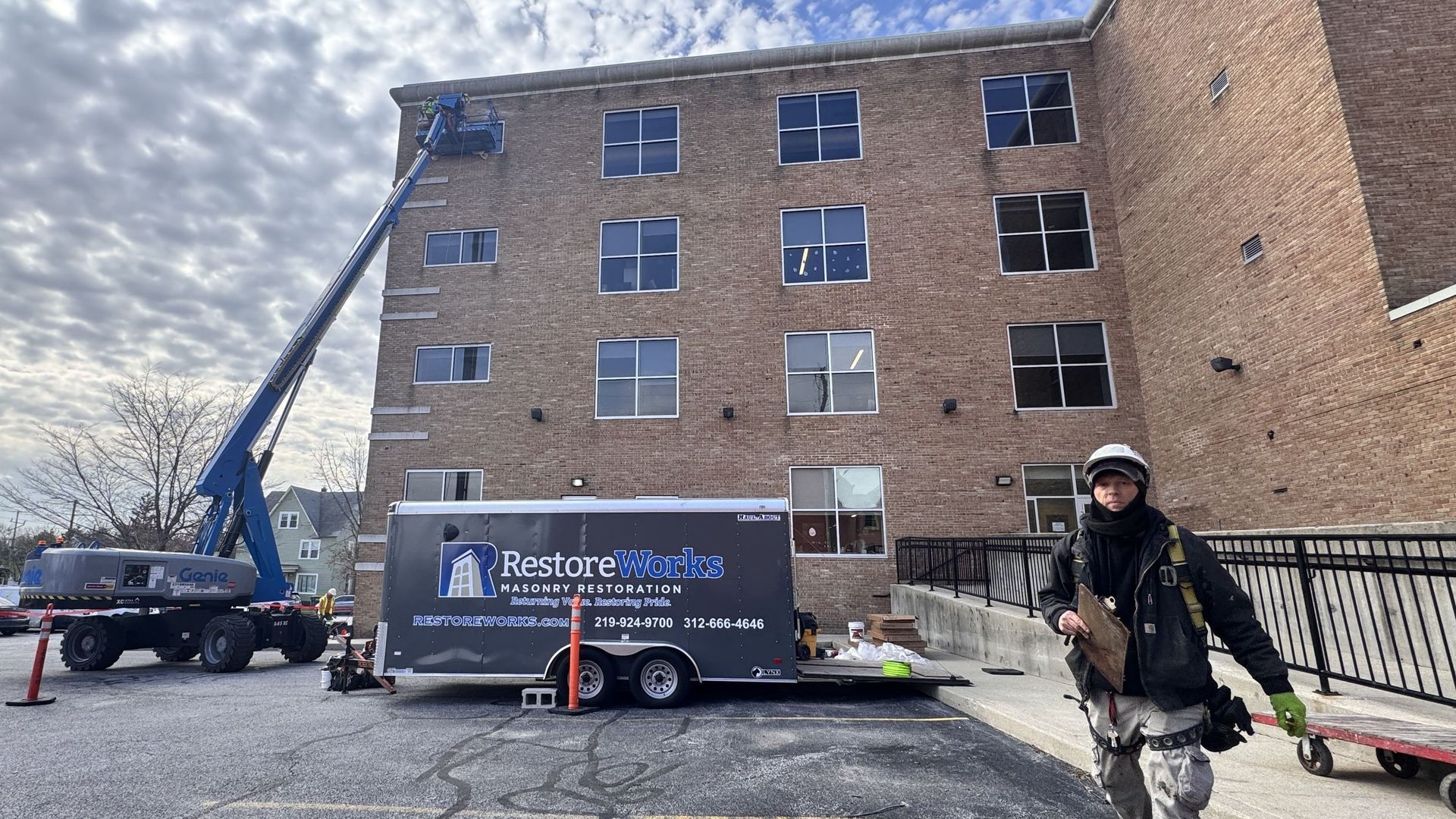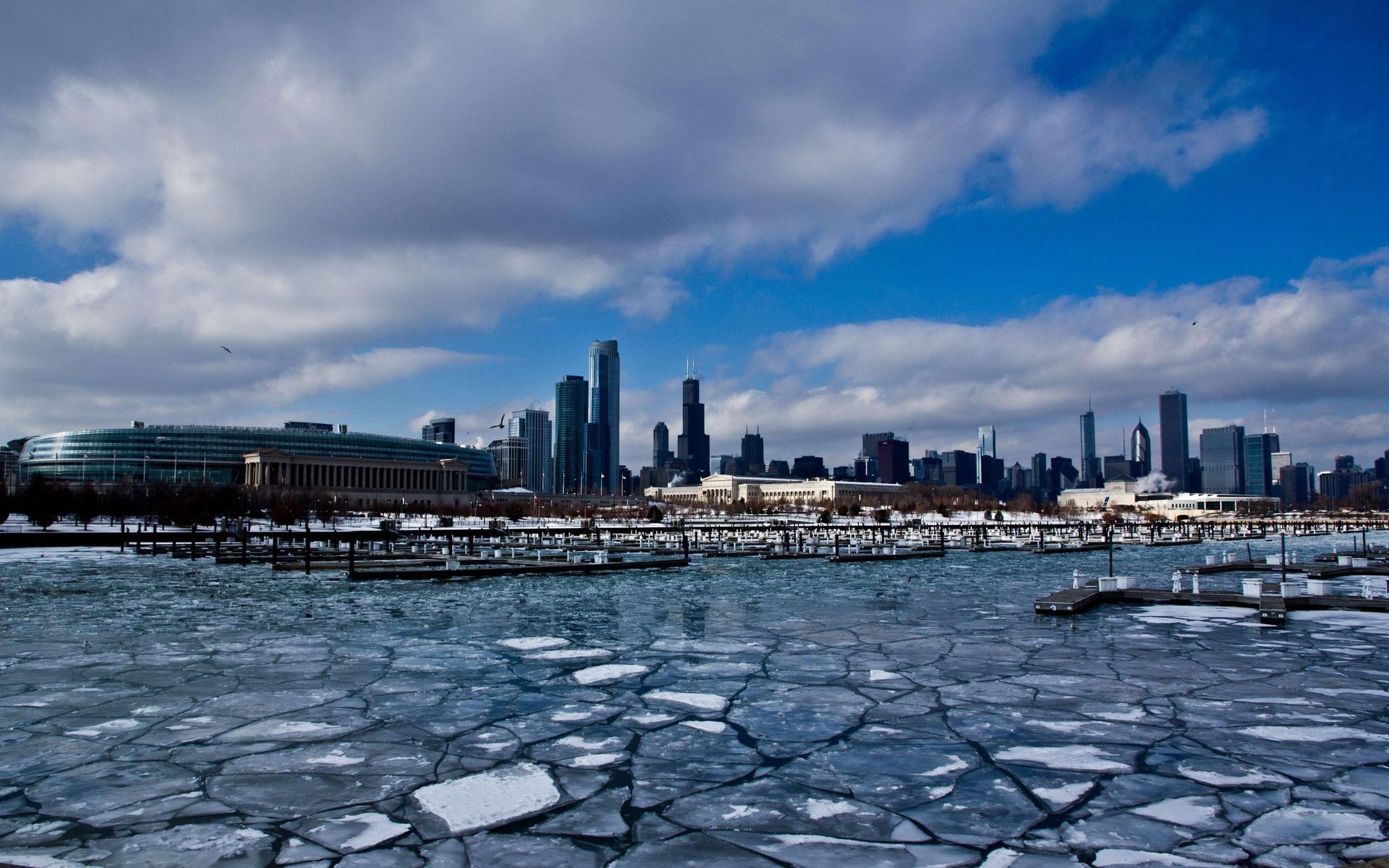If you are the owner or manager of commercial buildings, you know how crucial it is to maintain the building’s appearance and structural integrity. If you’ve ever asked, “What is the purpose of tuckpointing?”, the answer lies in preserving both the beauty and structural integrity of your building. Over time, mortar joints between bricks deteriorate due to moisture, weather, and age. Tuckpointing is a necessary procedure to fix and restore these deteriorated mortar joints in masonry buildings. In this article, we’ll explore what tuckpointing is, how often it should be done, its benefits, and why RestoreWorks is the top choice to contact if you need commercial tuckpointing services in Chicago.
What is Tuckpointing?
Tuckpointing is the detailed procedure of replacing deteriorating mortar with new mortar in the spaces between bricks or stones. Tuckpointing is a key component of masonry restoration, serving two purposes: to improve the masonry’s appearance and to restore the brickwork’s structural integrity. Mortar joints may degrade and disintegrate over time due to weathering, moisture, and other reasons. This jeopardizes the structure’s stability and lessens its overall attractiveness. By letting Chicago tuckpointing contractors fix and replace broken mortar, tuckpointing resolves these problems and produces a revitalized and more resilient masonry surface.
Tuckpointing vs. Repointing: What’s the Difference
Repointing, on the other hand, is a more straightforward repair method focused solely on removing and replacing damaged or crumbling mortar. The process does not involve the aesthetic detailing that tuckpointing provides. Instead, repointing is performed to restore the structural integrity of the masonry by ensuring that the mortar joints are sound and watertight, preventing moisture intrusion and further deterioration.
If you are the owner or manager of commercial buildings, you know how crucial it is to maintain the building’s appearance and structural integrity. If you’ve ever asked, “What is the purpose of tuckpointing?”, the answer lies in preserving both the beauty and structural integrity of your building. Over time, mortar joints between bricks deteriorate due to moisture, weather, and age. Tuckpointing is a necessary procedure to fix and restore these deteriorated mortar joints in masonry buildings. In this article, we’ll explore what tuckpointing is, how often it should be done, its benefits, and why RestoreWorks is the top choice to contact if you need commercial tuckpointing services in Chicago.
What is Tuckpointing?
Tuckpointing is the detailed procedure of replacing deteriorating mortar with new mortar in the spaces between bricks or stones. Tuckpointing is a key component of masonry restoration, serving two purposes: to improve the masonry’s appearance and to restore the brickwork’s structural integrity. Mortar joints may degrade and disintegrate over time due to weathering, moisture, and other reasons. This jeopardizes the structure’s stability and lessens its overall attractiveness. By letting Chicago tuckpointing contractors fix and replace broken mortar, tuckpointing resolves these problems and produces a revitalized and more resilient masonry surface.
Tuckpointing vs. Repointing: What’s the Difference
Repointing, on the other hand, is a more straightforward repair method focused solely on removing and replacing damaged or crumbling mortar. The process does not involve the aesthetic detailing that tuckpointing provides. Instead, repointing is performed to restore the structural integrity of the masonry by ensuring that the mortar joints are sound and watertight, preventing moisture intrusion and further deterioration.
| Feature | Tuckpointing | Repointing |
|---|---|---|
| Purpose | Structural repair and enhanced appearance | Structural repair only |
| Process | Remove old mortar, insert new mortar, and add fine lines | Remove old mortar and replace it with new mortar |
| Visual Effect | Creates crisp, uniform-looking joints | Matches existing joints, with less visual emphasis |
| Typical Use | Restoration and aesthetic improvement | Essential maintenance or urgent repair |
Advantages of Tuckpointing for Chicago Buildings
For your building, investing in commercial tuckpointing services has several benefits. Tuckpointing, first and foremost, ensures the masonry’s structural soundness. By repairing eroded mortar joints, tuckpointing aids in preventing water infiltration, which can cause additional damage, including cracks, spalling, and even structural failure. Tuckpointing also improves the exterior appearance of your building.
A structure looks well-maintained when its mortar joints have recently been tuckpointed, giving them a neat, uniform appearance. This can significantly enhance curb appeal and make an excellent first impression on customers, tenants, and guests.
How Tuckpointing Prevents Water Infiltration
One of the most critical benefits of tuckpointing is moisture control. Damaged or missing mortar joints create pathways for water to seep behind brickwork, which can lead to:
- Internal leaks and mold growth
- Rusting of embedded metal supports (like lintels)
- Freeze-thaw expansion that causes cracking and spalling
By replacing deteriorated mortar with a properly matched mix, tuckpointing seals the building envelope, preventing water intrusion and extending the life of the masonry system. This is especially important in Chicago, where winter weather can turn small gaps into major structural liabilities.
Improving Energy Efficiency Through Sealed Masonry
Air leakage and moisture penetration through compromised mortar joints can result in higher energy bills for commercial buildings. When tuckpointing is done correctly, it helps:
- Reduce drafts and uncontrolled airflow
- Maintain consistent indoor temperatures
- Lower HVAC strain and operational costs
While tuckpointing is not an insulation system on its own, it plays a vital role in supporting the overall thermal performance of your building, especially when combined with modern sealing and façade maintenance practices.
Boosting Curb Appeal for Commercial Properties
In addition to structural benefits, tuckpointing dramatically improves your building’s exterior appearance. Fresh mortar joints create a uniform, clean, and professional look, whether on a historic stone church or a modern brick retail center.
- Enhanced curb appeal through tuckpointing can:
- Increase perceived property value
- Strengthen brand image for tenants or businesses
- Attract new tenants or buyers
- Meet aesthetic standards in preservation districts
In a competitive commercial real estate market like Chicago, maintaining a visually appealing building exterior isn’t just cosmetic—it’s a strategic business decision.
How Often Should Professional Tuckpointing Be Done?
The age of the building, the environment it is exposed to, and the quality of the original mortar are some of the variables that affect how often tuckpointing is required. To evaluate the integrity of the mortar joints, it is necessary to have routine inspections carried out by a qualified tuckpointing contractor in Chicago. These checks can spot early indications of deterioration and enable prompt repairs, extending the life of the brickwork and preventing future expensive restoration work.
Why Choose RestoreWorks for Commercial Tuckpointing Services in Chicago?
So, what is the purpose of tuckpointing? It’s more than just an aesthetic choice; it’s about protecting your investment. Regular tuckpointing ensures your building resists moisture damage, avoids costly structural issues, and maintains its architectural charm.
RestoreWorks specializes in masonry, stone, and terra cotta restoration services for commercial buildings in Chicago and beyond. We have more than 30 years of expertise, so we are well-versed in the nuances of tuckpointing and other restoration procedures.
RestoreWorks is committed to providing exceptional quality while ensuring the exterior of your building’s structural soundness and historical correctness. Contact us for more information about commercial tuckpointing today.

